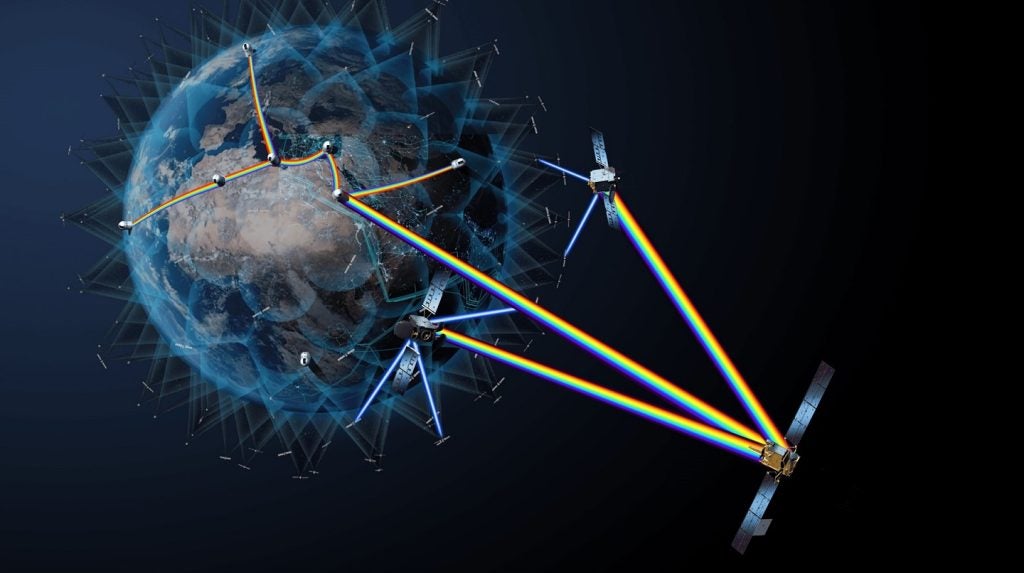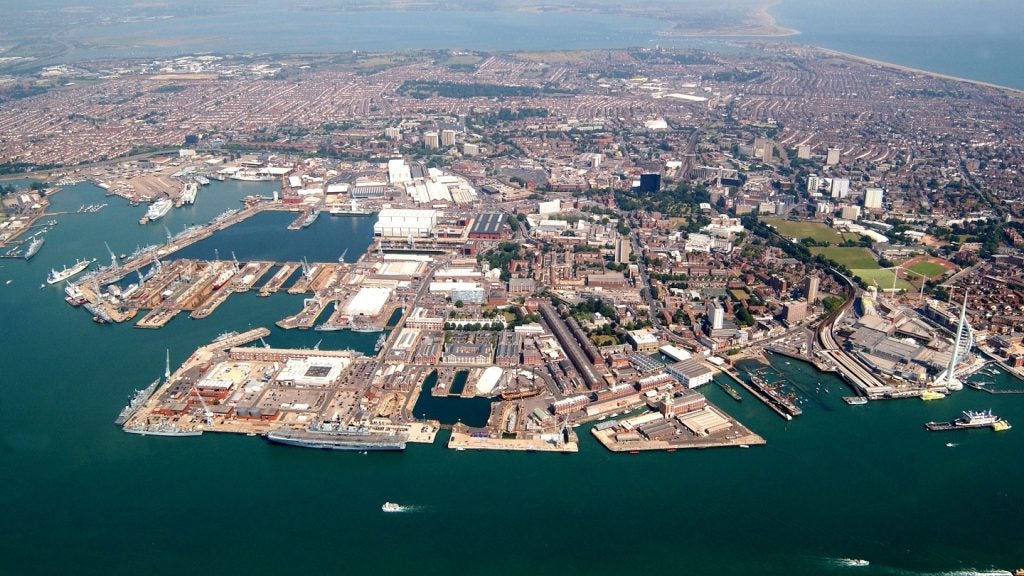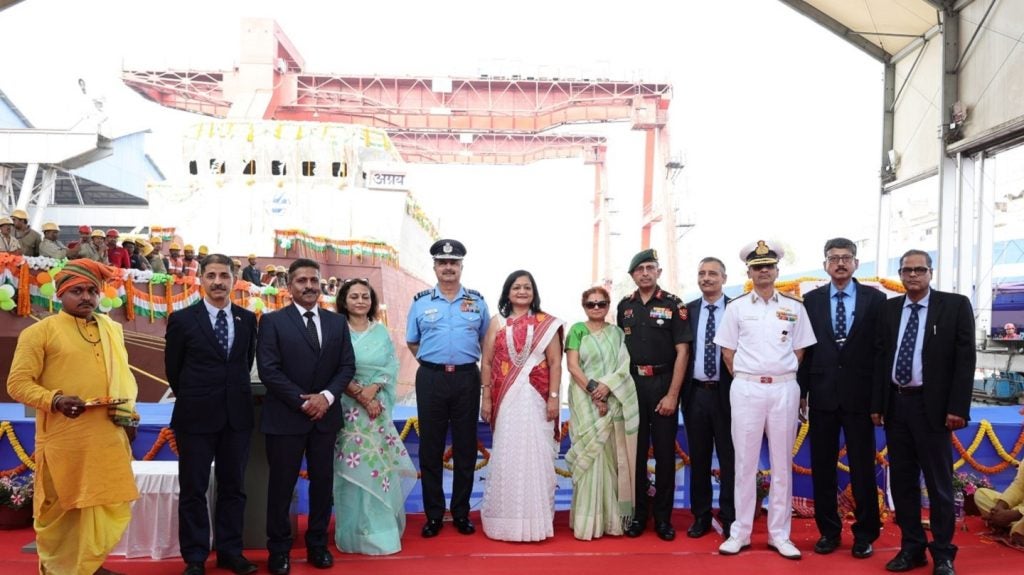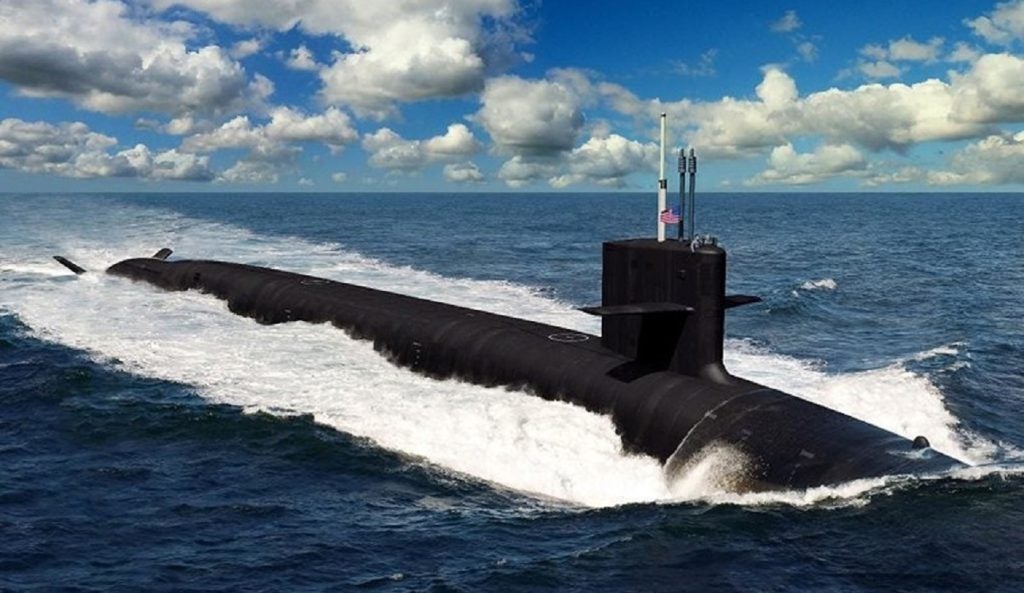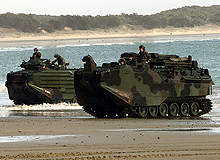
An amphibious landing operation is still the most complex of all military missions. To establish a beachhead with embarked troops requires the coordination of numerous military assets including air power, naval gunfire and air and sea transport.
Among the first to storm a beach are amphibious assault vehicles, which can operate in a dual role on land and sea. The most sophisticated vehicles, which originate from WWII, can reach the beach from landing ships without any support and spearhead the assault carrying fighting troops and their equipment, sometimes even as far as inland objectives.
As armoured personnel carriers, they are able to conduct mechanised operations and related combat support in subsequent operations ashore. The latest development in this area would have been the Expeditionary Fighting Vehicle (EFV) of the US Marines Corps.
However, on Jan. 6 US Defence Secretary Robert Gates announced the $15.5bn project would be scrapped due to massive time and budget overruns.
How well do you really know your competitors?
Access the most comprehensive Company Profiles on the market, powered by GlobalData. Save hours of research. Gain competitive edge.

Thank you!
Your download email will arrive shortly
Not ready to buy yet? Download a free sample
We are confident about the unique quality of our Company Profiles. However, we want you to make the most beneficial decision for your business, so we offer a free sample that you can download by submitting the below form
By GlobalDataThe ill-fated EFV
General Dynamics Land Systems designed the aluminium hull of the EFV with an MTU Friedrichshafen diesel engine and Shrouded Honeywell water-jet propulsion with a maximum water-borne speed of 46km/h. The electronically powered two-man Mk46 turret on the personnel variant has an Mk44 Bushmaster II 30mm cannon and a general purpose M240 7.62mm machine gun mounted coaxially with the main gun.
See Also:
The aim with the EFV was to get an amphibious assault vehicle that could be launched at sea from an amphibious assault ship beyond the horizon. It should have been able to transport a full Marine rifle squad to shore at high speed where it would be able to manoeuvre cross-country with agility and mobility that matched the US M1 Abrams main battle tank.
Currently, however, it looks like the US Marines will still have to depend on their current battle-proven AAV7A1 assault amphibian or Amtrack. Designed in the 1960’s it is in use with various other foreign nations such as Italy and Spain and has so far seen combat ranging from the Argentinean invasion of the Falklands in 1982 to the US-led invasion of Iraq in 2003.
The AAVP-7A1 RAM/RS personnel carrier has a crew of three and is equipped with an M2 .50 calibre machine gun and an MK19 40mm automatic grenade launcher. It can transport up to 21 combat-equipped Marines in addition to its crew of 3. Besides this there is also a command (C7), recovery (R7) and special (P7) variants with an MK154 kit to breach mine fields exist. Weighing 26t combat-loaded, it has a land speed of 72km/h and a water speed of 13km/h.
Like the EFV the primary responsibility of the AAV during an amphibious operation is to spearhead beach assaults. In the US Marines an AAV platoon consists of 13 P7 and one C7 variants and carries an infantry company. Unlike landing crafts the mission of an AAV platoon is not only to take the infantry from the ship to the beach but also to carry supplies to the area to provide a forced entry for the surface assault elements.
Normally the amphibious vehicles land first, support their infantry and provide security for follow-on waves brought in by other landing crafts. Having enough fuel to go up to 300 miles the AAV can also carry out inland missions without delay.
Hovering close behind
Another vehicle used to insert troops quickly from a safe distance to the objective at the coastline or near it are fast landing crafts like Landing Craft Air Cushion (LCAC). These hovercraft can carry troops and materials, including the heavy M1 Abrams main battle tank from ship to shore at high speed.
The LCAC has an operational range with payload of 370km at a speed of 75km/h. Being an air-cushion vehicle it is able to get fully ashore to unload and can be used to access more than 70% of the world’s coastline. Conventional landing crafts on the other hand are only able to access about 17% of that coastline for landings.
A much larger landing ship in its own class, is the Pomornik class hovercraft, with a design ranging back to the Soviet area, which can carry three main battle tanks, ten armoured personnel carriers with 140 troops or up to 500 troops at a speed of more than 100km/h and an endurance of five days.
Besides these littoral warfare elements also the standard inland combat vehicles from the main battle tank to the armoured personnel carrier sometimes feature amphibious qualities, to reduce dependency on bridges or ferries to cross rivers and to speed up operations.
While some are really capable of floating, others simply wade through obstacles underwater. For mobility they use their own tracks, added propellers or water-jets.
The German 6×6 armoured personnel carrier Fuchs for instance, which is produced by Rheinmetall Defence, is equipped with two rear-mounted, 360° turn-able propellers, which let it cross water obstacle with a speed of up to 10km/h. Its French counterpart, the 4×4 Véhicule de l’Avant Blindé by Renault is fully amphibious and has two water-jets.
Some main battle tanks are capable of wading through water obstacles. The German Leopard 2 uses a tube system of alterable height attached to its turret as a snorkel and an outlook for the tank commander. The former Soviet and now Russian Army BMP-3F Tracked Infantry Combat Vehicle floats and is driven by water-jets and can endure continuous amphibious operation for seven hours.
All this allows troops to cross water obstacles without any help from engineers, saving vital time and avoiding vulnerable targets like bridges, ferries and pontoons. With the help of amphibious vehicles beachheads can be quickly established and more easily reinforced.



